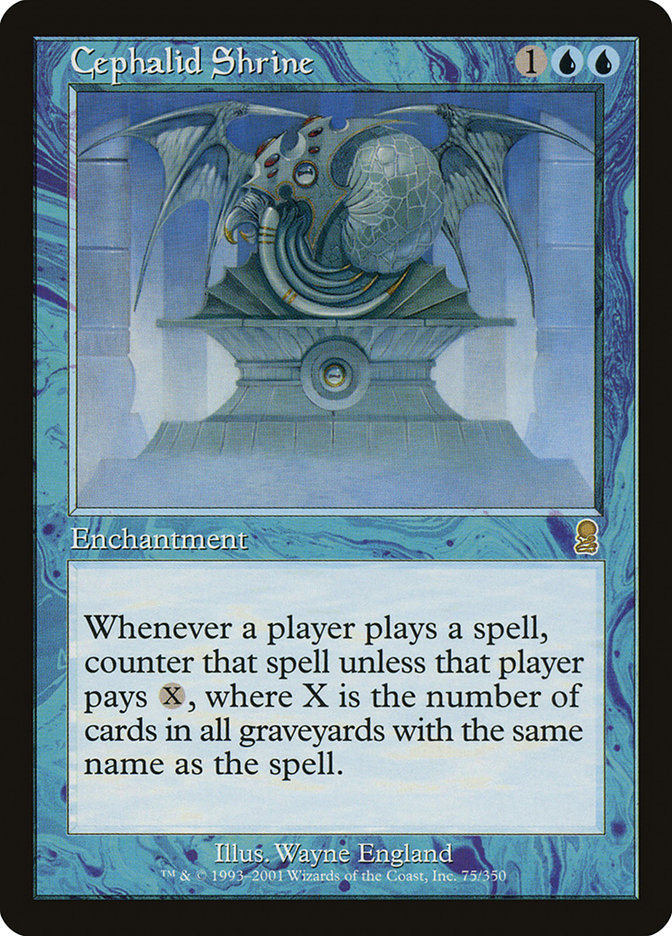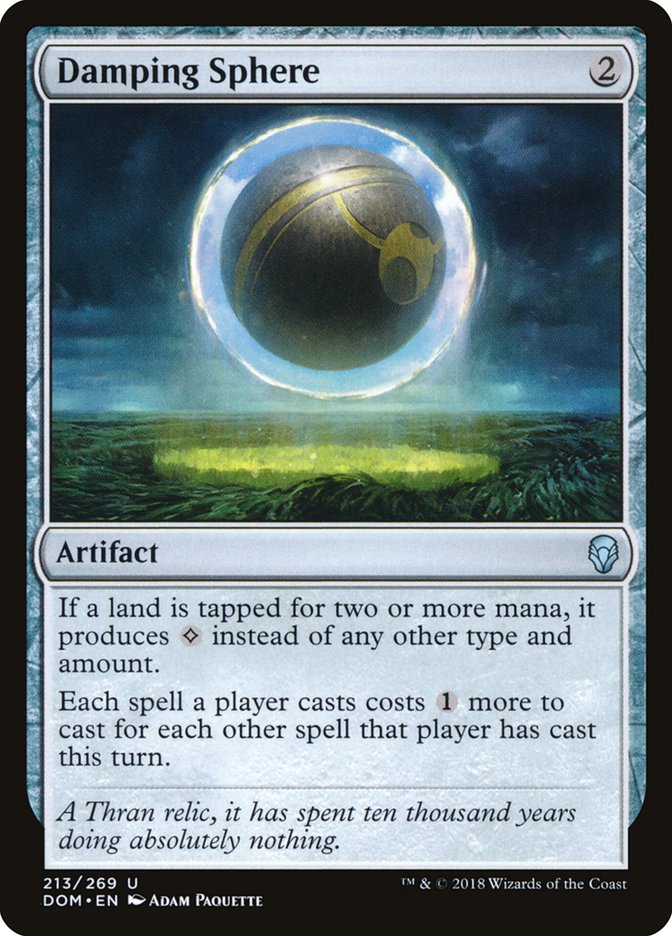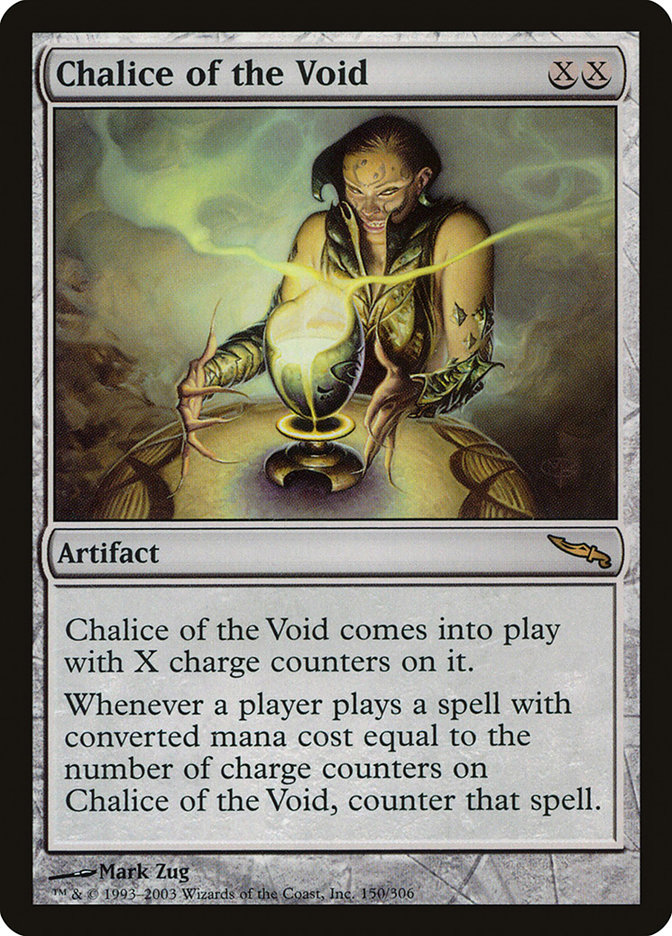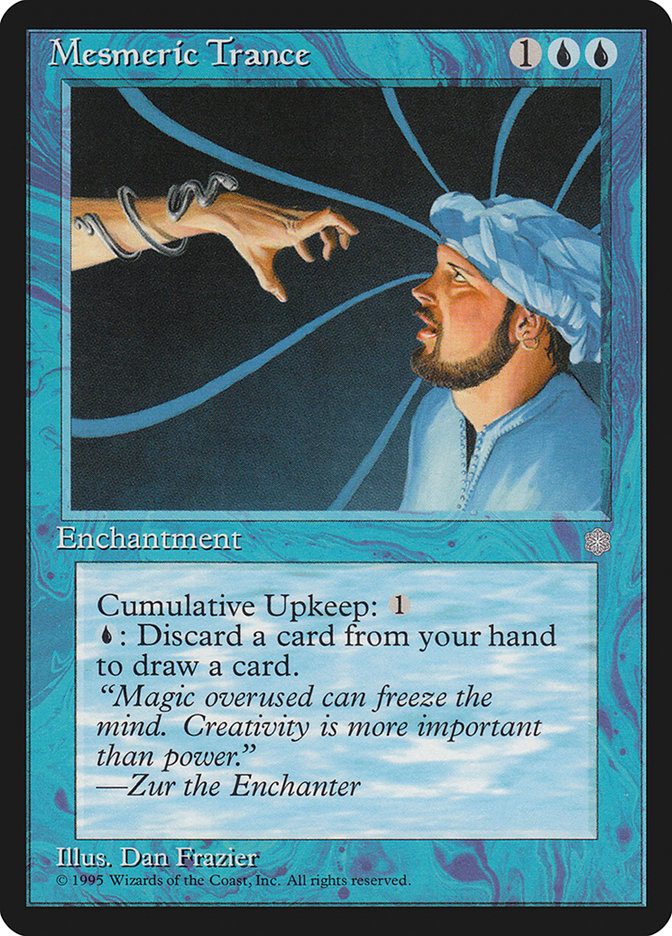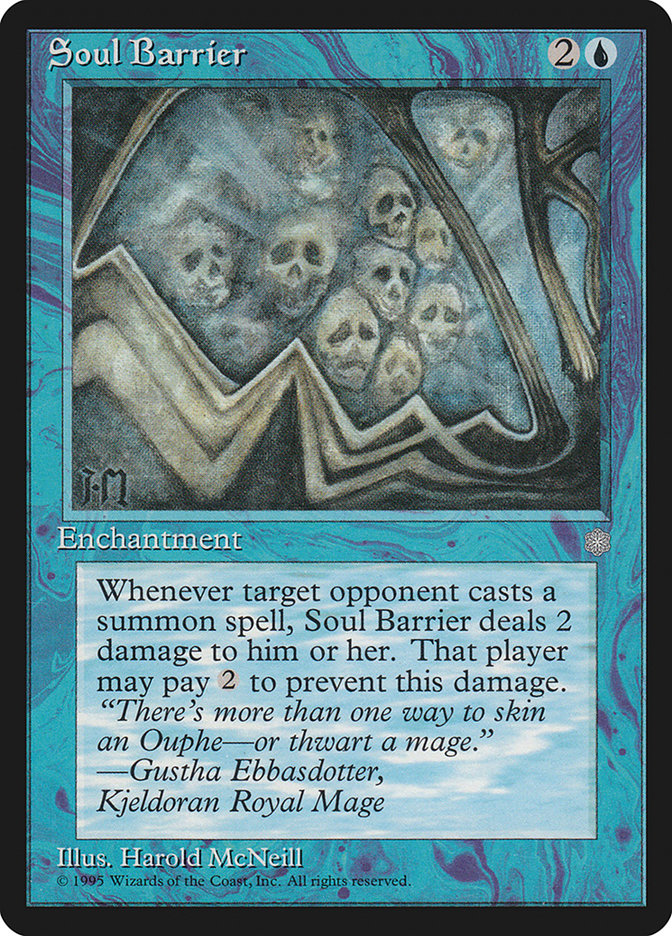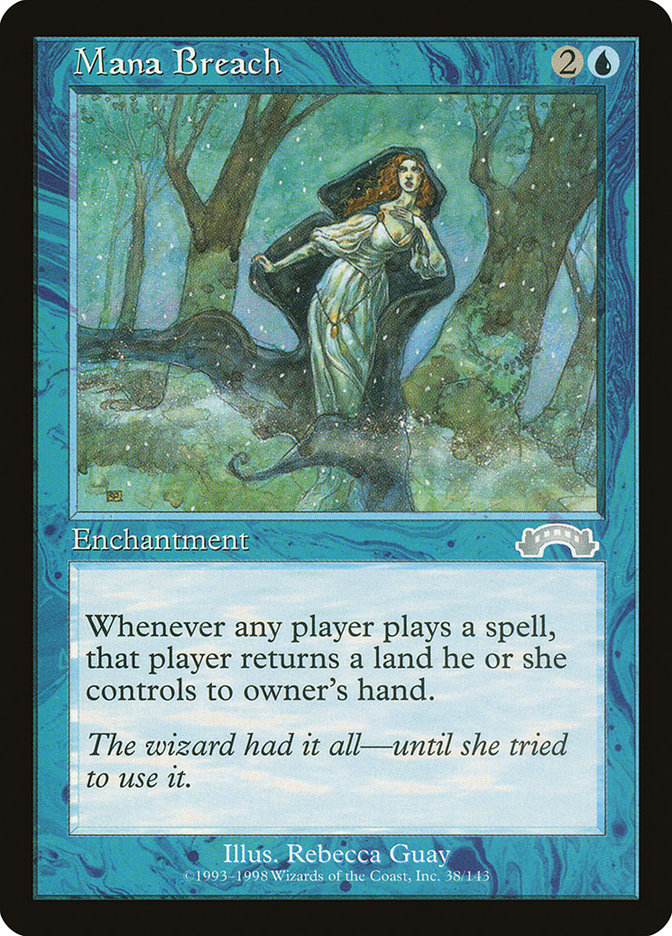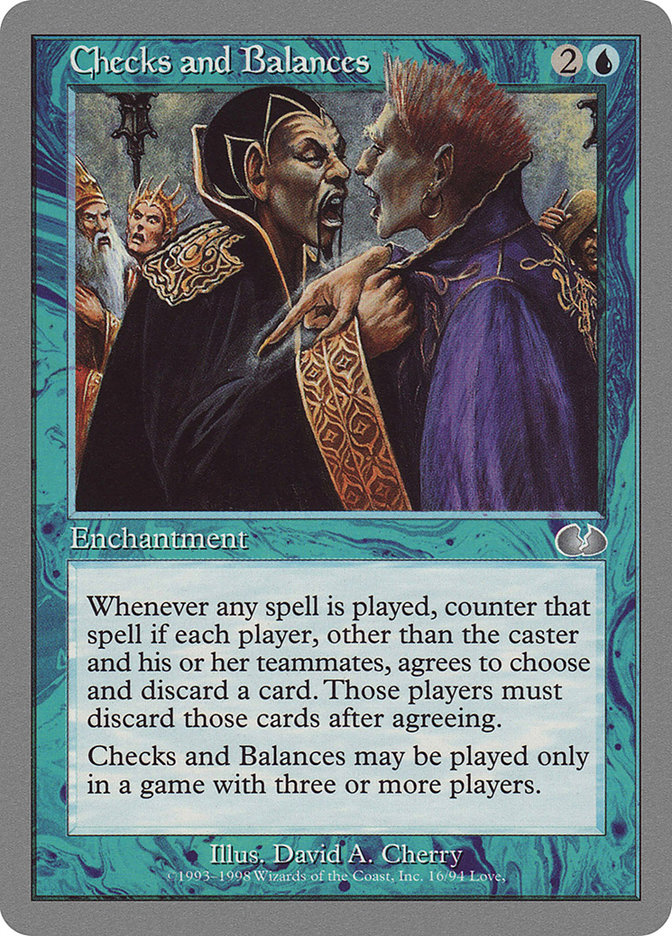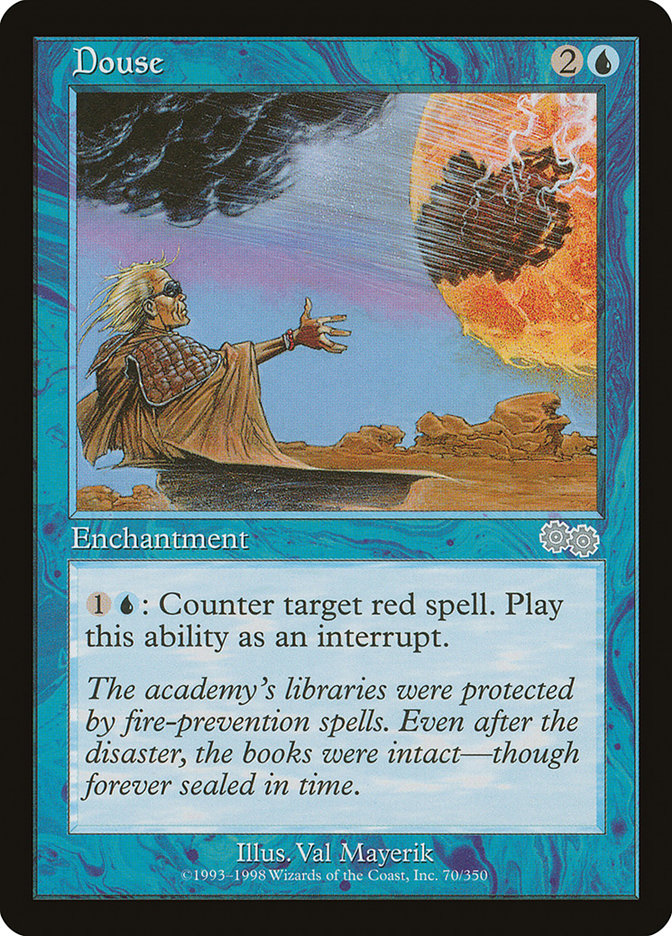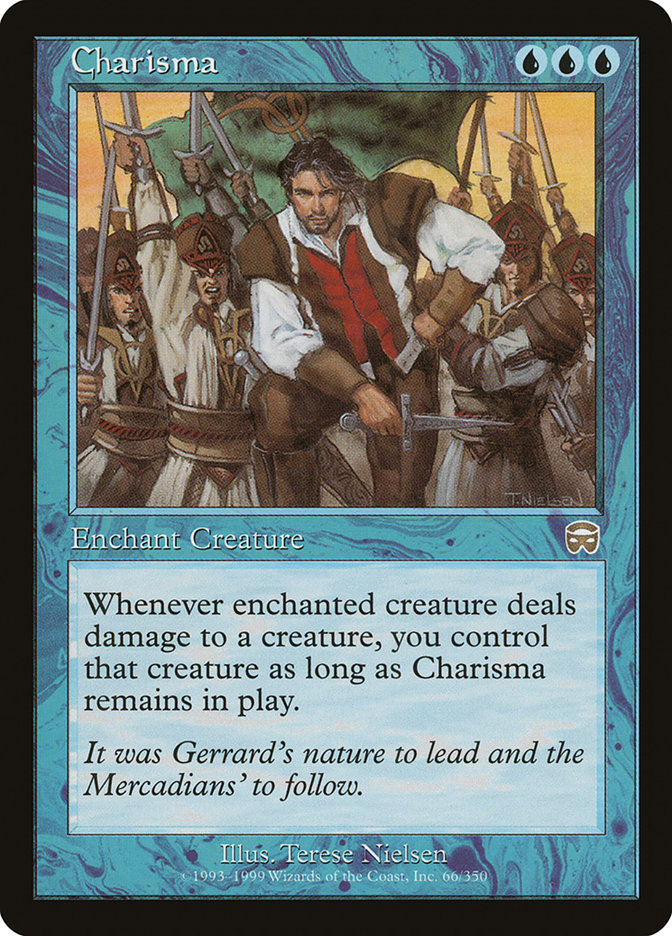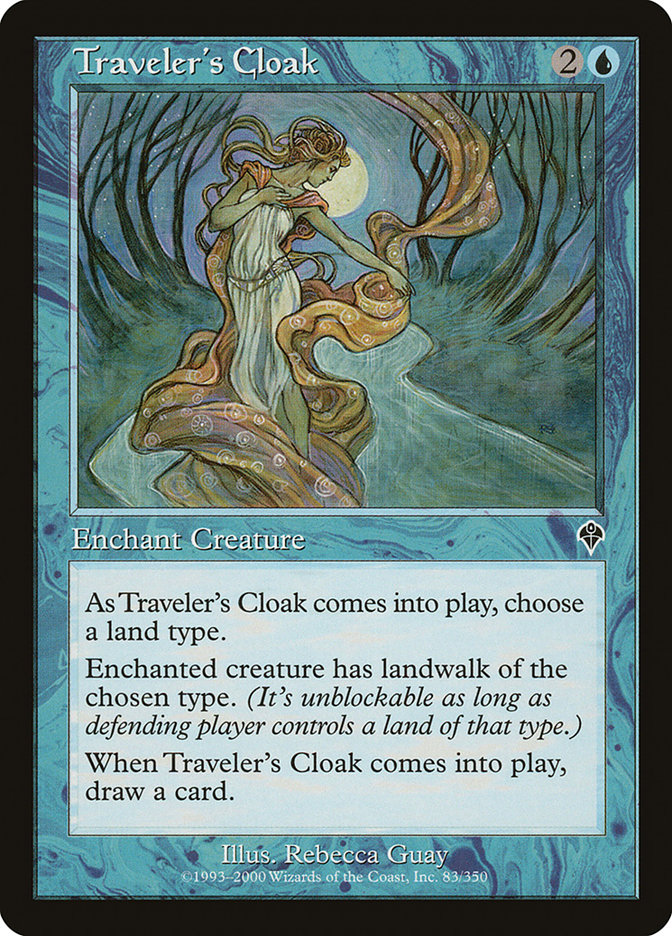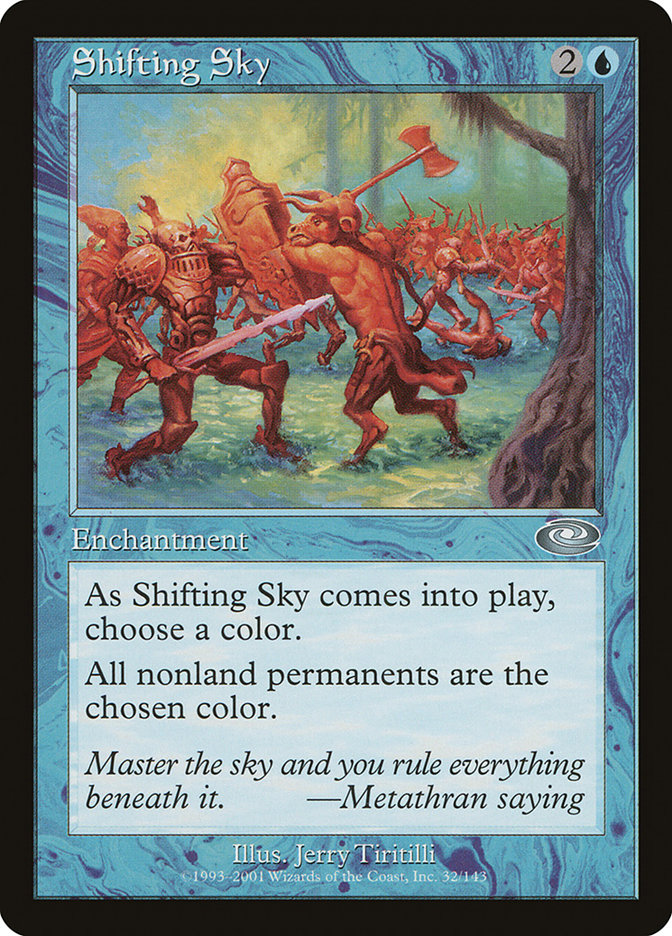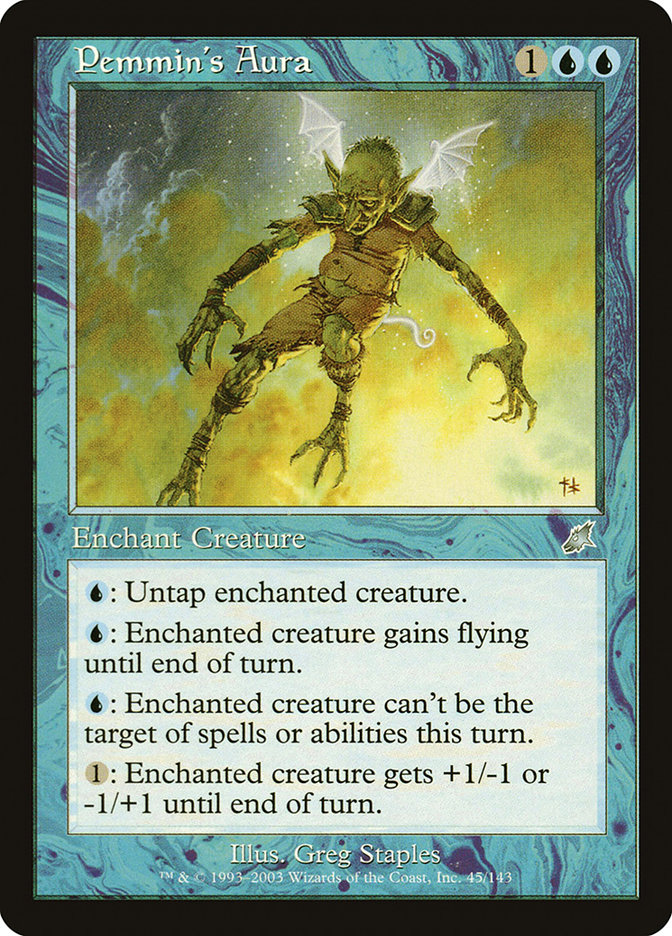Altar cefálido Carta MTG
| El coste de maná | |
| Costo de maná convertido | 3 |
| Rareza | Extraña |
| Tipo | Encantamiento |
| Liberado | 2001-10-01 |
| Coleccione símbolo | |
| Coleccione nombre | Odyssey |
| Coleccione código | ODY |
| Número | 75 |
| Frame | 1997 |
| Disposición | Normal |
| Border | Negra |
| Ilustrado por | Wayne England |
Texto de la carta
Siempre que un jugador juegue un hechizo, contrarresta ese hechizo a menos que ese jugador pague {X}, donde X es el número de cartas que haya en todos los cementerios con el mismo nombre que el hechizo.
Cartas Similares
La Capilla de Cefálido es un intrigante artefacto del universo de MTG. Está hecho de la misma tela que los artefactos de la historia con habilidades únicas que desafían las estrategias de los oponentes. La Capilla de Cefálido compite con cartas como la Esfera Amortiguadora en términos de interferir en las jugadas del enemigo. Mientras que la Esfera Amortiguadora se enfoca en las tierras que producen más de un maná, aumentando los costos de hechizos posteriores, la Capilla de Cefálido disuade un comportamiento diferente: el lanzamiento repetitivo de hechizos idénticos.
Otro pariente de la Capilla de Cefálido es el conocido Cáliz del Vacío. Este artefacto funciona con principios de coste de maná para interrumpir jugadas, convirtiéndolo en una elección versátil contra una variedad de mazos. La Capilla de Cefálido, en contraste, se enfoca en cartas con el mismo nombre, añadiendo una capa estratégica cuando los jugadores se enfrentan a mazos que utilizan efectos o combos repetibles. Con un coste de tres manás, la Capilla requiere una inversión inicial más pesada que el Cáliz del Vacío, pero puede obstaculizar severamente el plan de juego de un oponente si su mazo contiene muchas copias de ciertos hechizos.
Cada artefacto ofrece ventajas únicas y puede definir el flujo de un juego. La Capilla de Cefálido se destaca al requerir un enfoque reflexivo en la construcción de mazos entre los jugadores de MTG, asegurando que siga siendo una opción notable para aquellos que buscan añadir una dosis de interrupción impulsada por estrategia a su juego.
Cartas similares a Altar cefálido por color, tipo y coste de maná
Aspectos positivos de la carta
Ventaja de cartas: El Santuario Cefálido te permite potencialmente interrumpir la mano de tu oponente mientras mantienes tus propios recursos de cartas intactos. Esto puede cambiar el control del juego a tu favor al limitar las opciones disponibles para tu adversario.
Aceleración de recursos: Aunque el propio Santuario Cefálido no genera maná o fichas, su capacidad para mantener la mano del oponente bajo control contribuye indirectamente a la aceleración de recursos al potencialmente obstaculizar el desarrollo de su tablero y dejarte más espacio para hacer crecer tu base de maná y lanzar hechizos.
Velocidad instantánea: La flexibilidad de la activación del Santuario a velocidad instantánea no puede subestimarse. Esto permite un juego estratégico durante el turno de tu oponente, permitiéndote responder a amenazas o jugadas con un tiempo que puede afectar negativamente su plan de juego, preservando tu impulso en la partida.
Aspectos negativos de la carta
Requisito de descarte: Una desventaja del Santuario Cefálido es que su activación requiere descartar una carta. Esto puede ponerte en desventaja, especialmente si tu mano ya está agotada o estás contra una estrategia que presiona tus recursos de cartas.
Costo de maná específico: Diseñado para mazos que dependen en gran medida del maná azul, el costo de maná específico del Santuario Cefálido exige un compromiso con fuentes azules dentro de tu mazo. Esto puede restringir la flexibilidad de construcción de mazos y puede no encajar bien en estrategias multicolores que no pueden proporcionar consistentemente suficiente maná azul.
Costo de maná comparativamente alto: En el mundo de MTG, la eficiencia es clave, y el costo de maná azul acumulativo del Santuario Cefálido puede ser bastante elevado. Este costo es más alto en comparación con otras cartas en tu arsenal que podrían potencialmente ofrecer efectos similares o mejores por una inversión de maná menor.
Razones para incluir el Santuario Cefálido en tu colección
Versatilidad: El Santuario Cefálido ofrece una ventaja estratégica en mazos defensivos que buscan interrumpir el lanzamiento de hechizos de los oponentes. Su capacidad para escalar en poder a medida que avanza el juego lo hace adaptable a varios escenarios de juego.
Potencial de combo: Esta carta prospera en entornos sinérgicos, especialmente donde hay métodos para aumentar el número de copias de un solo hechizo en juego, mejorando así el efecto gravoso del Santuario en los hechizos del oponente.
Relevancia en el metajuego: En un metajuego definido por mazos que dependen en gran medida de hechizos que no son criaturas, el Santuario Cefálido se convierte en una herramienta clave para disuadir e impedir tales estrategias, potencialmente ralentizando a los oponentes y inclinando la balanza a tu favor.
Cómo vencer
El Santuario Cefálido plantea un desafío único en Magic: The Gathering debido a su capacidad para penalizar a los jugadores por lanzar hechizos con el mismo nombre que otro en el cementerio. Esto puede ser un obstáculo significativo en las partidas, especialmente cuando los mazos están basados en cartas clave. Para navegar alrededor de la presencia gravosa del santuario, diversificar tu mazo se vuelve crucial. Las cartas con una amplia gama de nombres de instancia única reducen el impacto que el Santuario Cefálido puede tener en tu estrategia de juego.
Otra estrategia efectiva es utilizar hechizos de eliminación o habilidades que se centran específicamente en encantamientos. Al incluir algunas cartas de odio contra encantamientos como Naturalizar o Desencantar, mantienes tus opciones abiertas cuando te enfrentas a un obstáculo de este tipo. Además, utilizar hechizos de manipulación de cementerios como la Cripta de Tormod para limpiar tu propio cementerio evita que el santuario acumule demasiados contadores, mitigando así su potencial para interrumpir tus jugadas.
La adaptabilidad y la preparación son clave al enfrentar el Santuario Cefálido en una partida. Un enfoque integral que incluya la eliminación de encantamientos y la diversidad estratégica en los nombres de los hechizos te equipará para desmantelar los obstáculos presentados por este peculiar encantamiento azul y mantener el control sobre el flujo del juego.
Donde comprar
Si estás buscando comprar una carta MTG Altar cefálido de un coleccione específico como Odyssey, existen varias opciones confiables que debes considerar. Una de las fuentes principales es tu tienda de juegos local, donde a menudo puedes encontrar paquetes de refuerzo, cartas individuales y mazos preconstruidos de colecciones actuales y pasadas. A menudo ofrecen el beneficio adicional de una comunidad donde puedes intercambiar con otros jugadores.
Para un inventario más amplio, particularmente de colecciones más antiguos, mercados en línea como TCGPlayer, Card Kingdom y Card Market ofrecen amplias selecciones y te permiten buscar cartas de colecciones específicos. Las plataformas de comercio electrónico más grandes como eBay y Amazon también tienen listados de varios vendedores, lo que puede ser un buen lugar para buscar productos sellados y hallazgos raros.
Además, el sitio oficial de Magic suele tener un localizador de tiendas y listas de minoristas para encontrar Wizards of the Productos con licencia costera. Recuerde comprobar la autenticidad y el estado de las cartas al comprarlas, especialmente a vendedores individuales en mercados más grandes.
A continuación se muestra una lista de algunos sitios web de tiendas donde puede comprar las Altar cefálido y otras cartas MTG:
 COMPRAR
COMPRAR BurnMana es un socio oficial de TCGPlayer
- eBay
- Card Kingdom
- Card Market
- Star City Games
- CoolStuffInc
- MTG Mint Card
- Hareruya
- Troll and Toad
- ABU Games
- Card Hoarder Magic Online
- MTGO Traders Magic Online
Ver productos MTG
Legalidades
Formatos de Magic the Gathering donde Altar cefálido tiene restricciones
| Formato | Legalidad |
|---|---|
| Commander | Legal |
| Legacy | Legal |
| Oathbreaker | Legal |
| Premodern | Legal |
| Vintage | Legal |
| Duel | Legal |
| Predh | Legal |
| Penny | Legal |
